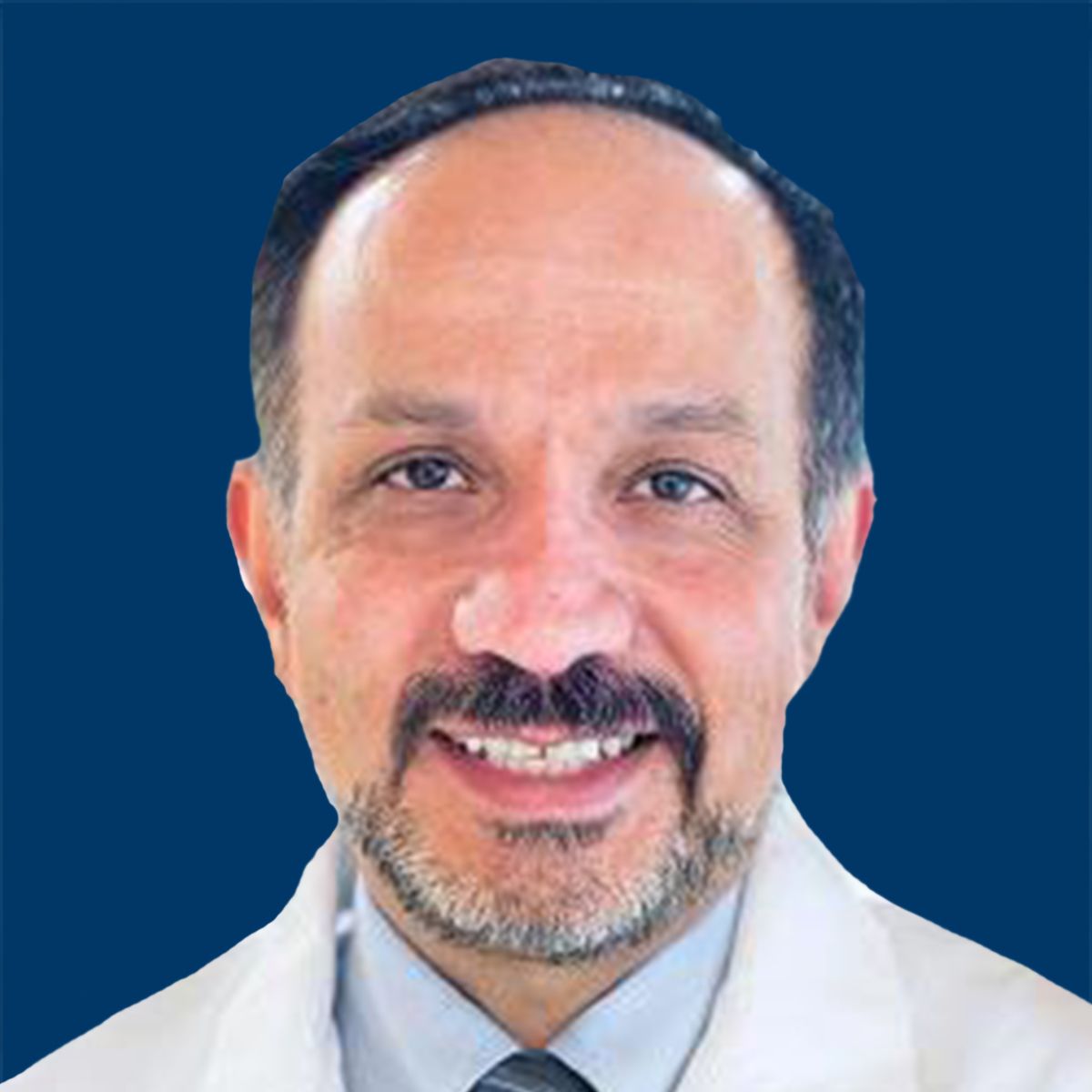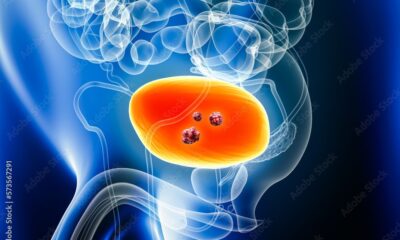Health
Novel Therapies Show Promise Against Immunotherapy-Refractory NSCLC

Research presented by Hossein Borghaei, DO, MS, at the 26th Annual International Lung Cancer Congress suggests that innovative treatment approaches could enhance outcomes for patients with non-small cell lung cancer (NSCLC) who have not responded to immunotherapy. Despite numerous phase 3 trials failing to outperform standard-of-care (SOC) treatments for these patients, promising strategies involving JAK2 inhibitors, bispecific antibodies, and cancer vaccines may offer new avenues for future therapies.
Borghaei, who is the chief of the Division of Thoracic Medical Oncology and a professor at the Fox Chase Cancer Center in Philadelphia, initiated his presentation by discussing findings from the prospective phase 3 Pragmatica-Lung study (NCT05633602). This study investigated the efficacy of combining ramucirumab (Cyramza) with pembrolizumab (Keytruda) against SOC treatments in patients with stage IV or recurrent NSCLC who had previously undergone immunotherapy.
Results presented at the 2025 ASCO Annual Meeting showed no significant improvement in overall survival (OS) for patients receiving the combination therapy (n = 419) compared to those receiving SOC (n = 419; hazard ratio [HR], 0.99; 95% confidence interval [CI], 0.81-1.22; P = .46). Borghaei remarked, “The OS in this study wasn’t that much better in the [investigational arm] vs SOC chemotherapy; perhaps this isn’t a [good approach].”
In contrast, data from the phase 3 HARMONi-A study (NCT05184712) revealed encouraging efficacy with a novel PD-1/VEGF bispecific antibody, ivonescimab, combined with chemotherapy. Patients with nonsquamous NSCLC in the combination arm (n = 161) achieved a median progression-free survival (PFS) of 7.1 months (95% CI, 5.9-8.7), compared to 4.8 months (95% CI, 4.2-5.6) in the placebo arm (n = 161; HR, 0.46; 95% CI, 0.34-0.62; P < .001). The study successfully met its primary endpoint for PFS, demonstrating a 9-month PFS rate of 37.9% compared to 18.3% in the placebo group. Borghaei noted, “[These data] come from a slightly different patient population: patients with EGFR-positive disease. [However], the [efficacy] signal is strong. In a tumor which we usually think of as being ‘cold’ and molecularly driven, we are seeing a clinical benefit with the addition of a bispecific, [but] we need additional studies.” Further exploring treatment options, Borghaei discussed a phase 2 trial (NCT03425006) that examined the combination of JAK inhibition and anti–PD-1 therapy in NSCLC. Results indicated that treatment-naive patients with metastatic NSCLC who had tumor PD-L1 levels of at least 50% experienced a 12-week overall response rate of 62% when treated with pembrolizumab and the selective JAK1 inhibitor itacitinib (n = 21). At a median follow-up of 27.6 months, the median PFS was 23.8 months (95% CI, 4.9-not applicable), with the duration of response not yet reached. “[These data show] that if you time the administration of the JAK inhibitor [after] priming the immune system with the checkpoint inhibitor...you can have a clinical benefit,” Borghaei explained. The emergence of new-generation cancer vaccines also captured Borghaei's attention. He highlighted findings from a phase 1 trial (NCT04911166) that assessed the safety and efficacy of intratumoral adenovirus–IL-12 combined with atezolizumab (Tecentriq). Results showed a disease control rate of 50% and a median PFS of 2 months for patients (n = 12) at a median follow-up of 22 months, with a median OS of 10.5 months. Importantly, there were no reports of grade 4 or 5 adverse effects or treatment discontinuation due to treatment-related adverse events. Additionally, the therapeutic cancer vaccine OSE2101 is currently under investigation in a phase 3 study (NCT06472245) against docetaxel for patients with metastatic NSCLC exhibiting secondary resistance to immunotherapy. The primary endpoint of this study is OS, and it is actively recruiting patients in North America and Europe. “These are going to be important studies for us to pay attention to because they could offer a potential step forward,” Borghaei remarked. Borghaei concluded his presentation by reiterating the potential role of bispecific antibodies in overcoming resistance to immunotherapy in NSCLC patients. “I believe something happens biologically when you engage [multiple] tumor antigens. Bispecifics could change the calculus. What we have now might be an incremental improvement [vs the SOC], but as we learn how these drugs work and [we learn to target] the right antigens, it’s possible that this is going to be the way forward.” In a promising phase 1a/1b study (NCT05460767), treatment with the first-in-class PD-1/IL-2 a-bias bispecific antibody IBI363 showed encouraging responses in patients with advanced NSCLC after prior immunotherapy. At a median follow-up of 11.3 months (95% CI, 10.3-11.6), patients with nonsquamous disease receiving the agent at 3 mg/kg (n = 31) achieved a median PFS of 9.3 months (95% CI, 6.2-11.7). The median OS was not calculable, but the 12-month OS rate was 70.9%. For patients with EGFR wild-type disease treated with IBI363 at the same dosage (n = 25), the median PFS was 5.6 months (95% CI, 3.1-9.4), with a 12-month OS rate of 71.6% (95% CI, 45.9%-86.6%). While progress has been limited in large-scale trials aimed at surpassing SOC benchmarks, Borghaei emphasizes that the studies and rationale presented could represent critical pathways for future advancements in the treatment landscape for NSCLC.
-

 Technology5 months ago
Technology5 months agoDiscover the Top 10 Calorie Counting Apps of 2025
-

 Technology3 weeks ago
Technology3 weeks agoOpenAI to Implement Age Verification for ChatGPT by December 2025
-

 Health3 months ago
Health3 months agoBella Hadid Shares Health Update After Treatment for Lyme Disease
-

 Health4 months ago
Health4 months agoAnalysts Project Stronger Growth for Apple’s iPhone 17 Lineup
-

 Health4 months ago
Health4 months agoErin Bates Shares Recovery Update Following Sepsis Complications
-

 Technology5 months ago
Technology5 months agoDiscover How to Reverse Image Search Using ChatGPT Effortlessly
-

 Technology3 months ago
Technology3 months agoElectric Moto Influencer Surronster Arrested in Tijuana
-

 Technology5 months ago
Technology5 months agoMeta Initiates $60B AI Data Center Expansion, Starting in Ohio
-

 Technology2 months ago
Technology2 months agoDiscover 2025’s Top GPUs for Exceptional 4K Gaming Performance
-

 Technology5 months ago
Technology5 months agoRecovering a Suspended TikTok Account: A Step-by-Step Guide
-

 Health5 months ago
Health5 months agoTested: Rab Firewall Mountain Jacket Survives Harsh Conditions
-

 Lifestyle5 months ago
Lifestyle5 months agoBelton Family Reunites After Daughter Survives Hill Country Floods





















